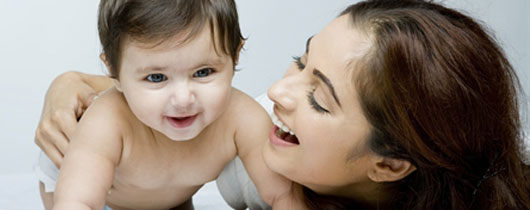
The breasts have developed over millions of years, during the evolution of the human race, from sweat glands which have become adapted to the production of milk. At birth, the breasts are represented by small nipples which are the same in both sexes. The glandular tissue from which the breasts will later develop is present and this is occasionally illustrated by the phenomenon of 'mastitis neonatorum’, in which the estrogen from the mother causes the breasts of the new-born infant to swell and enlarge to an appreciable extent for one or two days.
Under normal circumstances, the breast development does not commence until the ovaries begin to secrete estrogen at the age of seven, eight or nine. Both the nipple and the breast tissue then gradually develop and growth continues as a slow and regular process until the onset of the first period. At this time, or shortly afterwards, the breasts may enlarge rapidly as a result of the release of large quantities of hormone into the circulation. The initial development of the breasts is entirely dependent on estrogen. Progesterone, however, is required to develop the particular properties that are necessary for lactation that is the production of milk. The fully developed breast does not begin to produce milk until after delivery because lactation depends on a hormone called prolactin which is secreted by the pituitary gland only at this time.
The breasts contain a certain amount of fibrous tissue that divides each into approximately twenty lobes, and each lobe contains the milk-secreting glands. The lobes are a highly complicated arrangement of glandular tissue that gradually forms into a single duct which eventually opens in the nipple. Thus the nipple contains approximately twenty ducts, one from each lobe of the breast. Beneath the nipple, each of the ducts widens into a pouch which is used to store milk during lactation. Milk can most easily be produced from the lactating breast by exerting pressure deep under the nipple well.
Estrogen is responsible for the development of the breasts themselves and their glandular tissue, and progesterone is necessary to mature the glands, but prolactin must be present to enable them to produce milk.
The breasts do not contain any muscle and it is, therefore, essential that they should have good support during pregnancy, especially if they are full or heavy. If the breast tissue is once allowed to sag or stretch it will never recover and no amount of exercise will restore the former breast contour.

